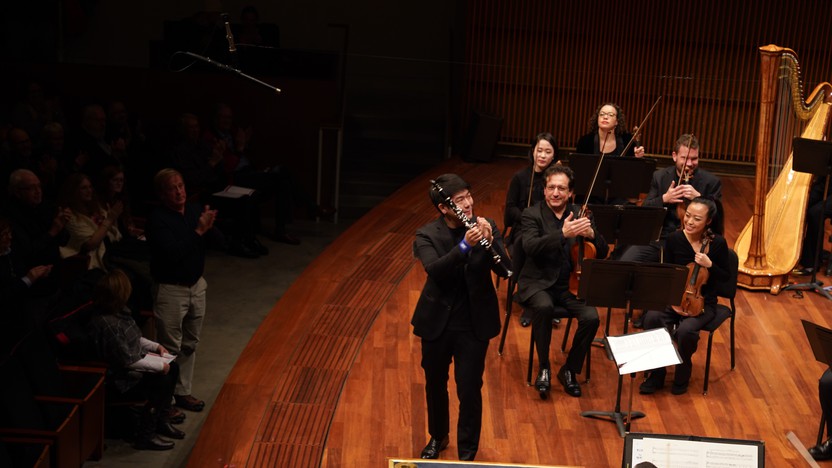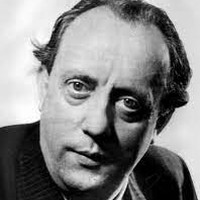Mozart's Jupiter Symphony



Like many young German composers in the aftermath of World War I, Karl Amadeus Hartmann wrote sassy, ironic music that exploded tired Romantic conventions and jabbed at modern politics and society. Such cultural activism flourished during the freewheeling days of the Weimar Republic, but the climate shifted with the Nazi takeover in 1933. Many composers went into exile, including Kurt Weill and Hanns Eisler, who both settled in the United States. Others ended up in prison or worse; Erwin Schulhoff, to name one great talent, died in a concentration camp. Hartmann was one of the very few anti-fascist composers who survived World War II without capitulating to the Nazis or fleeing. He prevented performances of his music in Germany, but he continued to compose new works that drew upon Hebrew melodies, Communist songs, and even banned scores by his compatriots. It was a brave and perhaps foolhardy resistance, but, as Hartmann himself wrote, “No artist, unless wishing himself written off to nihilism, can sidestep his commitment to humanity.”
For the Chamber Concerto that Hartmann completed in 1935, he acknowledged that his inspiration came from the Hungarian composer Zoltán Kodály, to whom the score is dedicated. Even without that information, a listener familiar with Kodály’s masterpiece written two years earlier, Dances of Galánta, might recognize a strong resemblance between the central themes in each work’s introduction. The scores also share a structure that progresses through a series of related dance episodes, including plenty of high-energy music steeped in the Magyar culture of central Europe. Even with so many unabashed references to a peer’s work, the Chamber Concerto ends up having a strikingly original sound, due in large part to its scoring. The clarinet takes a leading role, and a string quartet is set apart from the rest of the string orchestra, in the manner of a concerto grosso. This multilayered approach yields surprising results, like how the clarinet melds into the background amid the long-lined counterpoint and drawn-out harmonies of the closing Fantasie movement.
Aaron Grad ©2021
 Listen to Audio
Listen to Audio
When Wolfgang Amadeus Mozart began writing symphonies, he was an eight-year-old keyboard prodigy in London, where he had played for King George III and befriended Johann Christian Bach — the youngest son of Johann Sebastian Bach, and a trendsetter in the emerging genre of the symphony. Mozart’s earliest symphonies naturally followed the bright and clean style mastered by the “London” Bach. Later, as a teenager back in his hometown of Salzburg, Mozart looked to the example of Joseph Haydn, whose brother happened to work alongside Mozart and his father. Some of the symphonies Mozart wrote as a seventeen- and eighteen-year-old ranked among his first truly brilliant compositions, and by that time he had already completed three-fourths of his lifetime symphonic output.
Mozart had fewer occasions to write symphonies during his heyday as a busy freelancer in Vienna. He might never have written his three final symphonies were it not for the money troubles that plagued his final years, a period when demand for his performances had dried up. Some opportunity must have sparked this symphonic trilogy (a detail historians have not managed to unearth), but most likely nothing came of it. Mozart may not even have heard all three before he died.
Mozart’s final symphony, completed on August 10, 1788, has long been known as the Jupiter Symphony, a moniker probably added by Johann Peter Salomon, the same shrewd impresario who later brought Franz Joseph Haydn to London. The opening movement, set in an energized Allegro vivace tempo, establishes a ceremonial atmosphere with an abundance of quick, stepwise swoops. The Andante cantabile slow movement follows with serene and spacious music, in which ample rests and breaks leave melodies unaccompanied, downbeats unstressed, and textures uncluttered.
Like in the symphonies by his friend Haydn, the minuet functions as a light-hearted palate cleanser. The main “joke” here comes in the form of phrases that slip down through segments of the chromatic scale, touching on notes that momentarily clash with the home key.
The finale introduces a number of related themes and then juggles them with a variety of contrapuntal techniques. This balancing act reaches its climax in the coda, which contains a swirling fugue treatment of all five main themes at once. It proves how well Mozart absorbed the techniques of Johann Sebastian Bach, at a time when most composers dismissed such formal counterpoint as hopelessly old-fashioned, and it affirms Mozart’s godlike talent for marrying intellectual clarity with earth-shaking emotion.
Aaron Grad ©2022
Get driving directions and find nearby parking.
Find dining options close to the venue.
View seating charts to find out where you'll be seating.
Get driving directions and find nearby parking.
Find dining options close to the venue.
View seating charts to find out where you'll be seating.
